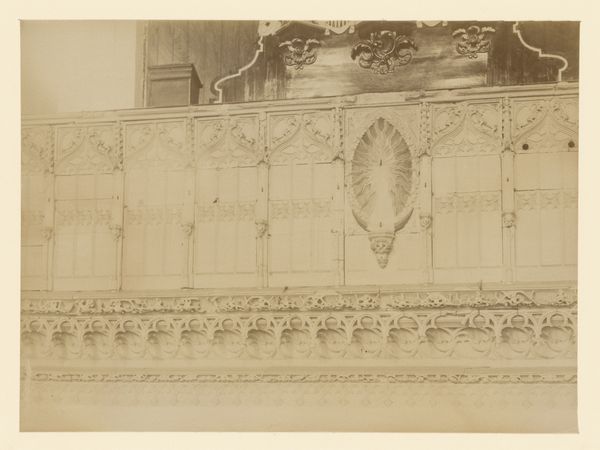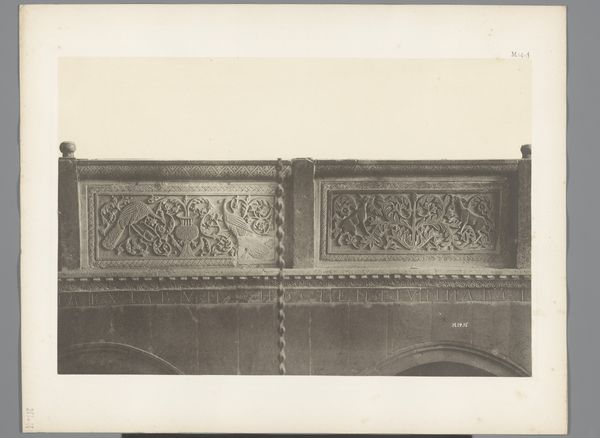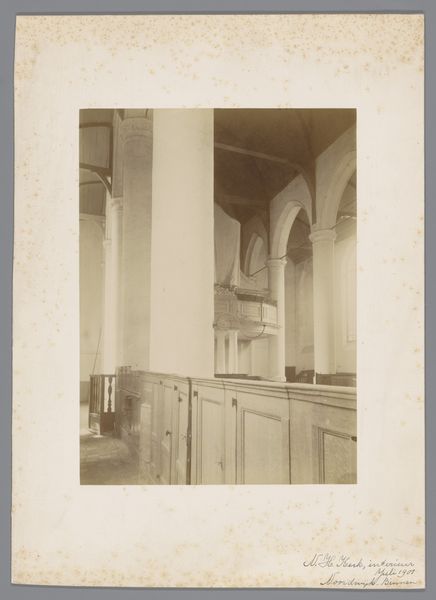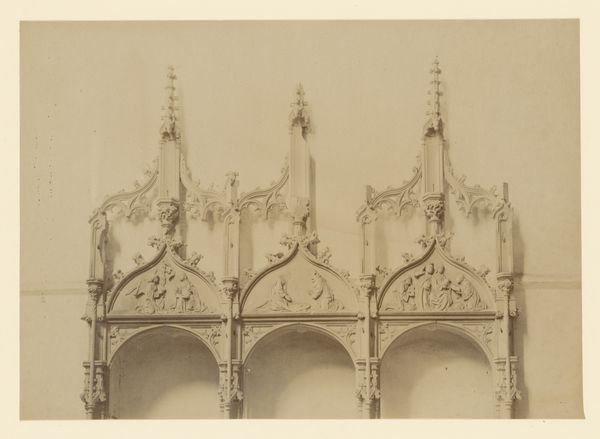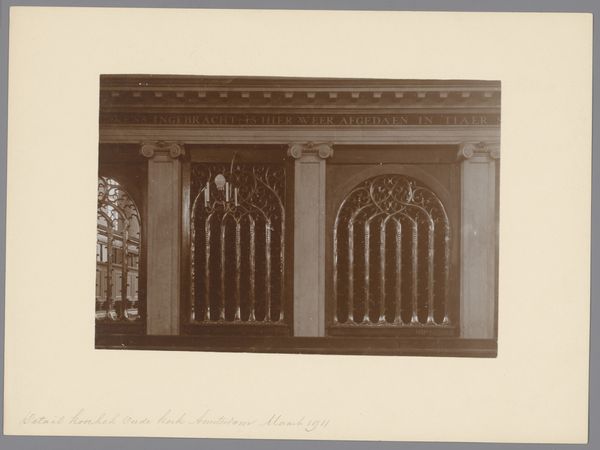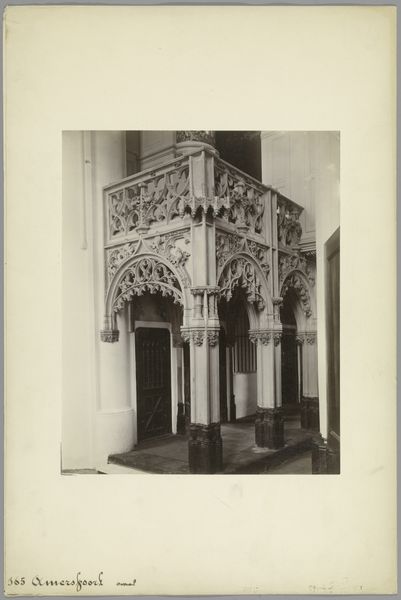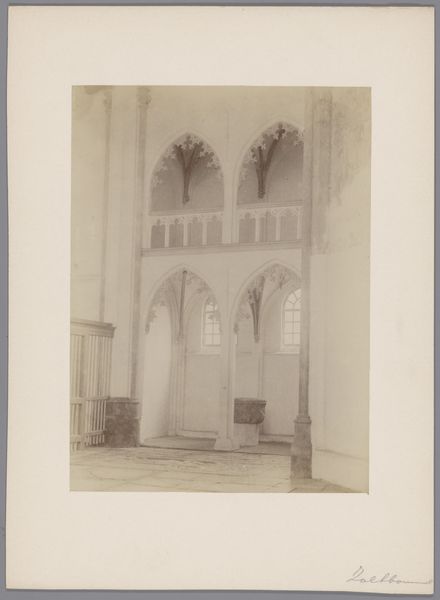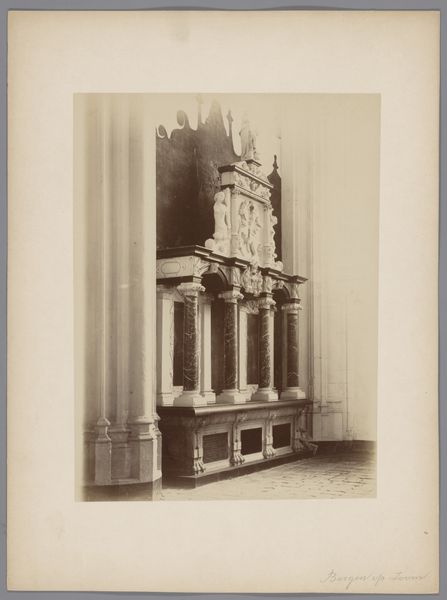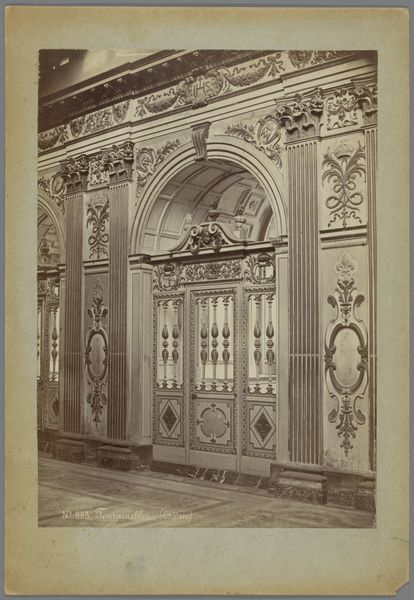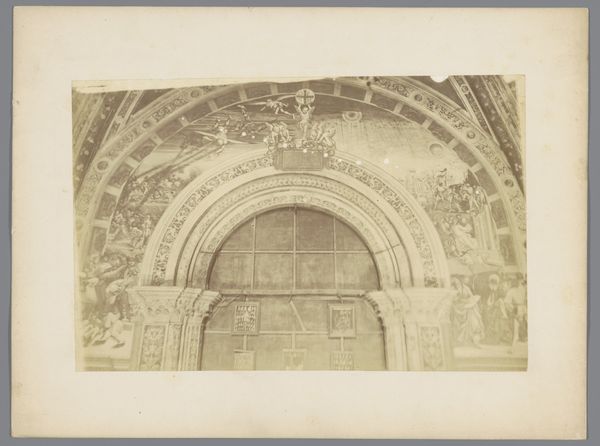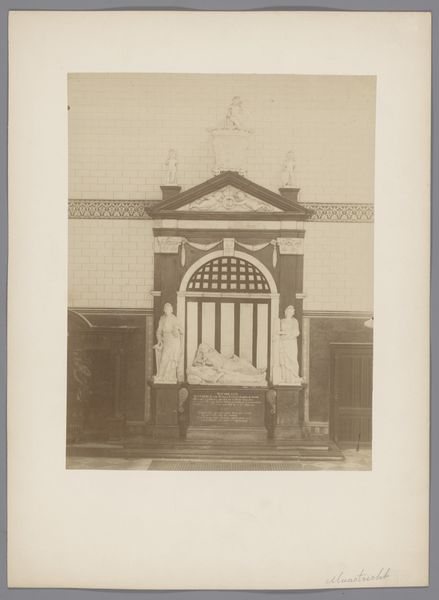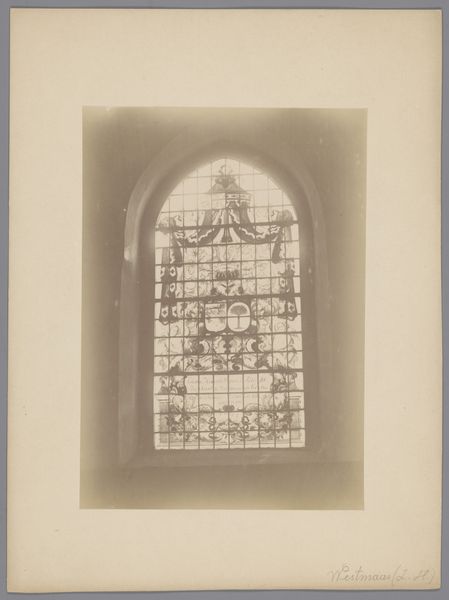
Dimensions: height 158 mm, width 235 mm
Copyright: Rijks Museum: Open Domain
Editor: This photograph, "Doksaal in de Kloosterkerk Ter Apel," was taken in 1893, although the artist is unknown. It looks like a church interior featuring a decorated gallery, probably for an organ. The soft, sepia tones give it a quiet, almost ethereal feel. What can you tell me about the history embedded in this image? Curator: This photograph is fascinating because it gives us a glimpse into the cultural importance of religious architecture and music at the close of the 19th century. The Ter Apel Monastery was quite old, founded in the medieval era. This doksaal, or elevated platform, wasn’t just functional; it visually reinforced social hierarchies and religious power. Who occupied this space would have had a significant impact. Who do you think would have had access? Editor: Likely religious figures or musicians? Did the placement of an organ signify status in this period? Curator: Absolutely. Organs were expensive and complicated instruments. Their placement within the church, elevated above the congregation, was no accident. The music amplified religious experiences but also declared the wealth and power of the institution itself. Notice how much detail is focused just around it, it really stands out. Consider what impact religious art in the Netherlands has had on people through the centuries, particularly the symbolism displayed so clearly here. Editor: I never really thought of organs as symbols of power. Thanks to that background, I’m definitely looking at this photo with a new perspective! Curator: And hopefully a better understanding of the complex roles art and architecture play in shaping our perceptions.
Comments
No comments
Be the first to comment and join the conversation on the ultimate creative platform.
